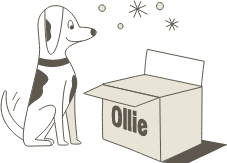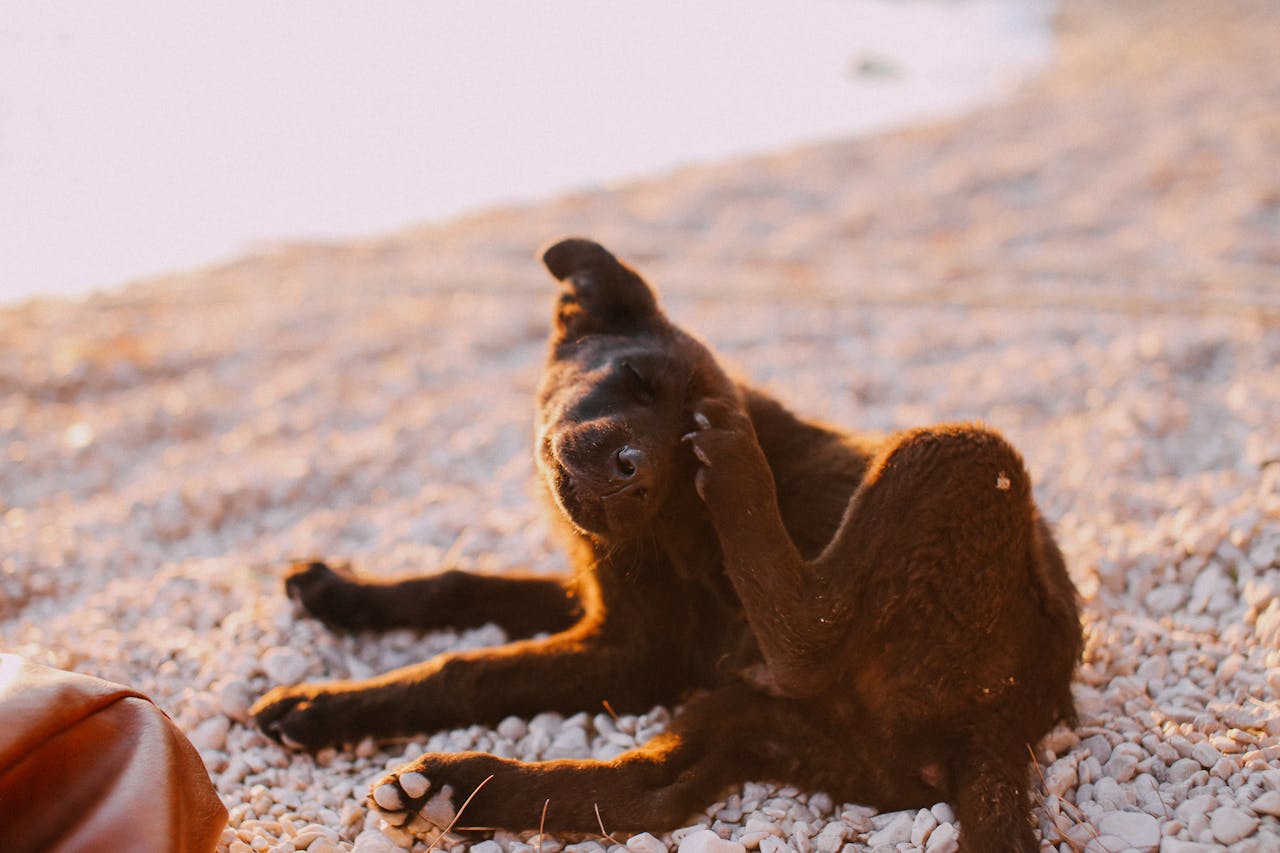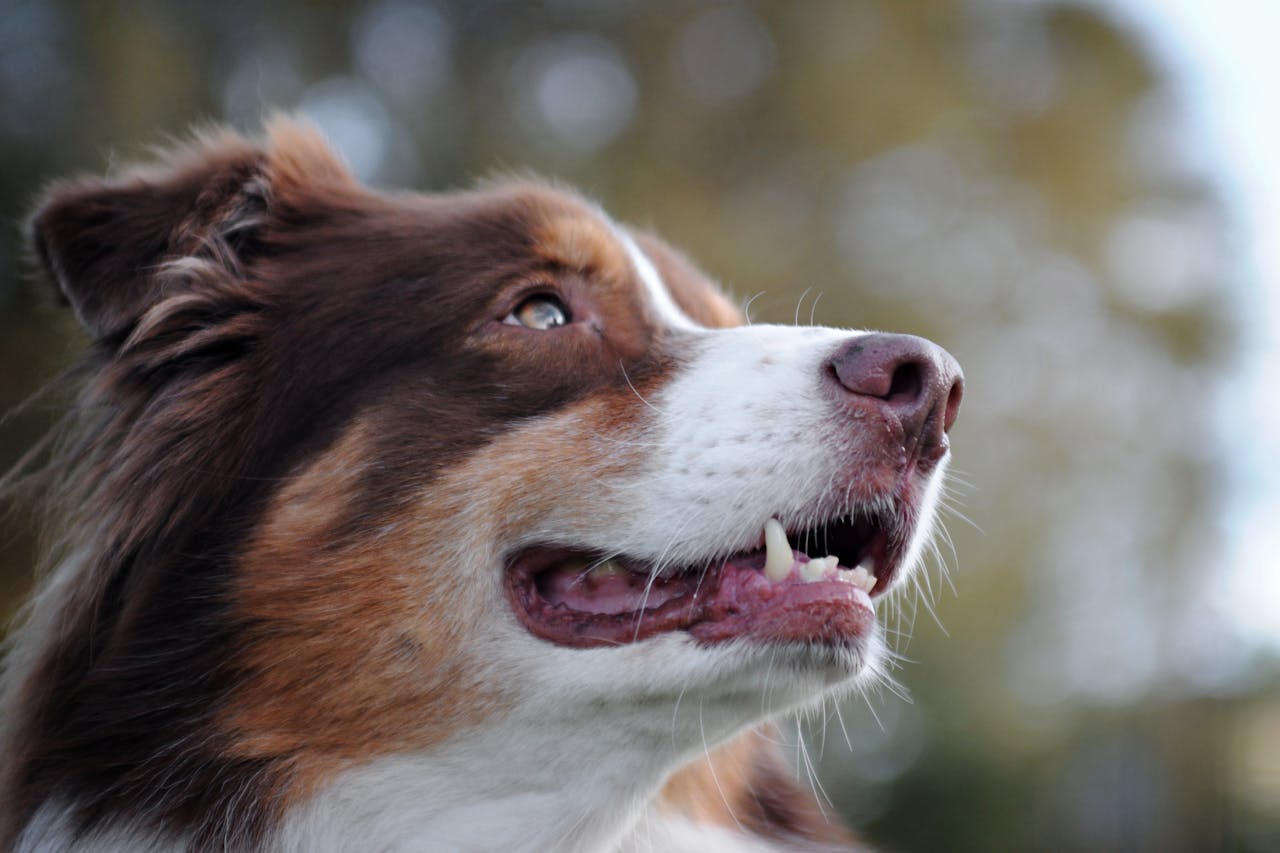Hey Ollie blog readers! We’re offering you an exclusive 60% OFF your starter box! Try now!
If your dog has been scratching nonstop, losing patches of fur, or developing irritated, scaly skin, mange could be the cause. Mange is a skin disease caused by microscopic mites that burrow into a dog’s skin, leading to intense itching, inflammation, and even infections. While mange is treatable, it can spread quickly—especially in dogs with weakened immune systems.
There are two main types of mange in dogs:
- Sarcoptic mange (canine scabies) – Highly contagious and spreads through contact with infected animals or surfaces.
- Demodectic mange (Demodex) – Caused by an overgrowth of naturally occurring mites, often due to a weakened immune system.
If left untreated, mange can cause significant discomfort, skin damage, and secondary infections. In this guide, we’ll cover the symptoms, causes, and treatment options to help your dog recover quickly and prevent reinfection.
Did you know? A strong immune system plays a crucial role in preventing mange and supporting skin health. Ollie human-grade dog food provides high-quality nutrition with essential vitamins and minerals to keep your pup’s skin and coat in top condition.
Key Takeaways
- Mange is a skin disease caused by microscopic mites that burrow into a dog’s skin, leading to itching, hair loss, and skin infections.
- There are two main types of mange: Sarcoptic mange, which is highly contagious, and Demodectic mange, which occurs due to a weakened immune system.
- Early treatment and a strong immune system—supported by a nutritious diet like Ollie fresh dog food recipes —can help dogs recover faster and prevent future flare-ups.
What is Mange in Dogs?
Mange is a skin disease caused by mites that burrow into a dog’s skin, leading to intense itching, hair loss, and skin infections. While mites naturally exist on all dogs, mange occurs when these mites multiply uncontrollably, triggering severe irritation and discomfort.
There are two main types of mange in dogs:
1. Sarcoptic Mange (Canine Scabies) – Highly Contagious
- Caused by Sarcoptes scabiei mites, which burrow into the skin.
- Extremely itchy and contagious—spreads through direct contact with infected dogs, bedding, or surfaces.
- Can spread to humans and other pets, causing temporary skin irritation.
2. Demodectic Mange (Demodex) – Immune-Related
- Caused by Demodex mites, which naturally live on a dog’s skin but become problematic when the immune system is weak.
- Not contagious to humans or other animals.
- More common in puppies, senior dogs, or dogs with underlying health conditions.
Since mange can worsen quickly, early diagnosis and treatment are essential to prevent severe skin damage and infections.
Mange Symptoms in Dogs
Mange can start with mild itching and redness, but if left untreated, it can lead to severe hair loss, skin infections, and intense discomfort. Identifying mange early can help prevent serious complications and make treatment more effective.
Early-Stage Mange Symptoms
- Persistent itching and scratching
- Red, inflamed skin (especially around the ears, belly, elbows, and legs)
- Dry, flaky patches of skin
- Mild hair thinning in localized areas
Advanced Symptoms of Mange
- Widespread hair loss with bald patches
- Thickened, crusty, or scaly skin
- Sores, open wounds, or secondary bacterial infections
- A foul odor due to infected skin
- Lethargy or decreased appetite (in severe cases)
Causes of Mange in Dogs
Mange is caused by microscopic mites that infest a dog’s skin, but how these mites take hold depends on the type of mange and a dog’s overall health.
Causes of Sarcoptic Mange (Highly Contagious)
- Direct contact with an infected dog (common in shelters, kennels, and dog parks).
- Exposure to contaminated bedding, toys, or grooming tools.
- Contact with wildlife (foxes, coyotes, and other animals can carry sarcoptic mange).
Causes of Demodectic Mange (Weakened Immune System)
- Immature immune system (puppies can develop localized Demodex).
- Underlying health issues (such as autoimmune diseases or malnutrition).
- Stress or poor diet, which can weaken a dog’s natural defenses.
What Does Mange Look Like on a Dog?
Mange can appear differently depending on its stage and severity, but there are key signs to look for. Catching it early can prevent serious skin infections and discomfort for your pup.
Early-Stage Mange in Dogs
- Small bald patches, usually around the ears, face, or legs.
- Mild redness and irritation in affected areas.
- Dry, flaky, or scaly skin.
- Increased scratching and rubbing against surfaces.
Advanced Mange
- Widespread hair loss across the body.
- Thickened, crusty, or scabbed skin from excessive scratching.
- Sores, open wounds, or bacterial infections due to broken skin.
- Foul odor from secondary infections.
- Lethargy and weight loss in severe cases.
Sarcoptic vs. Demodectic Mange Appearance
- Sarcoptic Mange – Starts with intense itching, redness, and hair loss, often affecting the ears, belly, and legs first. It spreads rapidly and can lead to severe crusting and infections.
- Demodectic Mange – Often begins with localized bald patches on the face or paws. If left untreated, it can spread, leading to skin thickening, scabbing, and deep infections.
Mange in Dogs Treatment
Mange requires veterinary treatment to eliminate the mites and heal your dog’s skin. The type and severity of mange will determine the best treatment approach.
Veterinary Diagnosis
Your vet will likely perform:
- Skin scrapings to check for mites under a microscope.
- Blood tests (in severe cases) to rule out underlying health conditions.
Common Treatments for Mange
Topical Medications
- Medicated shampoos and dips (e.g., sulfur-lime dips, benzoyl peroxide shampoos) help soothe the skin and kill mites.
- Prescription ointments or spot-on treatments may be used for localized mange.
Oral and Injectable Medications
- Ivermectin, milbemycin, or afoxolaner-based medications help eliminate mites from the inside out.
- Antibiotics or antifungal medications may be needed if secondary infections occur.
At-Home Care & Skin Support
- Regularly wash bedding, toys, and collars to prevent reinfection.
- Give your dog a nutritious diet to strengthen immunity and promote healing.
A healthy diet can speed up recovery! Ollie human-grade dog food is rich in omega fatty acids, vitamins, and lean proteins to support skin repair, coat health, and a strong immune system—all essential for healing from mange.
Is Mange Contagious to Humans and Other Pets?
Mange can spread easily between animals and, in some cases, to humans. Whether it’s contagious depends on the type of mange your dog has.
Sarcoptic Mange (Highly Contagious)
- Can spread to other dogs, cats, and even humans through direct contact.
- In humans, it can cause itchy red rashes but does not survive long-term.
- Common in shelters, dog parks, and multi-pet households.
Demodectic Mange (Not Contagious)
- Caused by an overgrowth of naturally occurring mites—not from exposure to other infected animals.
- Cannot be passed to other pets or humans.
- Most common in puppies, senior dogs, or dogs with weakened immune systems.
How to Prevent Mange in Dogs
While mange is treatable, prevention is always the best approach. By keeping your dog’s skin and immune system strong, you can help reduce their risk of developing mange.
1. Maintain Good Hygiene & Grooming
- Bathe your dog regularly with a vet-approved shampoo to keep their skin clean.
- Brush your dog’s coat to remove dirt, debris, and loose hair.
- Wash bedding, toys, and collars frequently to prevent mites from lingering.
2. Avoid Contact with Infected Animals
- Keep your dog away from stray or infected animals (especially in shelters, boarding facilities, or dog parks).
- If adopting a rescue dog, have them checked for mange before introducing them to other pets.
3. Support Your Dog’s Immune System with a Healthy Diet
A strong immune system helps dogs fight off infections and prevent Demodex flare-ups. Feeding a high-quality diet like Ollie’s fresh, human-grade meals provides:
- Essential vitamins & minerals to keep the skin barrier healthy.
- Omega fatty acids to promote a shiny coat and reduce inflammation.
- High-quality proteins to support overall immune function.
4. Schedule Regular Vet Checkups
- Routine vet visits help catch skin issues early before they become severe.
- If your dog has a history of mange, ask your vet about preventive care options.
Final Thoughts on Mange In Dogs
Mange is a common but treatable skin condition that can cause itching, hair loss, and discomfort in dogs. Whether it’s Sarcoptic mange (highly contagious) or Demodectic mange (linked to immune health), early detection and treatment are key to preventing serious skin infections and discomfort.
If you notice symptoms like persistent scratching, bald patches, or irritated skin, consult your vet for diagnosis and treatment options. Medications, medicated baths, and a strong immune system all play a role in recovery.
Supporting your dog’s skin health starts from within! Ollie’s fresh, human-grade meals provide essential nutrients, omega fatty acids, and high-quality proteins to help your pup fight infections, reduce inflammation, and maintain a healthy coat.
By following good hygiene practices, preventing exposure to infected animals, and feeding a nutrient-rich diet, you can help keep your pup happy, healthy, and mange-free.
Frequently Asked Questions About Mange
Can I catch mange from my dog?
Sarcoptic mange (canine scabies) can spread to humans, causing temporary itching and rashes. However, the mites cannot complete their life cycle on human skin, so the infection usually resolves on its own. Demodectic mange is not contagious to humans or other pets.
How long does it take for a dog to recover from mange?
With proper treatment, most dogs recover within 4-6 weeks. Severe cases may take longer, especially if secondary infections are present. Consistent treatment and a healthy diet help speed up recovery.
Can mange go away on its own?
No, mange requires veterinary treatment. Without treatment, the infestation can worsen, leading to painful skin infections and significant hair loss.
How do I soothe my dog’s itchy skin during mange treatment?
- Use vet-approved medicated shampoos to relieve irritation.
- Keep your dog’s skin hydrated with omega-rich nutrition—Ollie’s fresh meals contain essential fatty acids that support skin repair.
- Prevent excessive scratching by keeping your dog’s nails trimmed.
How do I prevent mange from coming back?
- Maintain good hygiene—regularly wash bedding, toys, and grooming tools.
- Avoid contact with infected animals.
- Support your dog’s immune system with a high-quality, nutrient-rich diet like Ollie’s fresh meals to keep their skin and coat healthy.
Tagged As:

The nutrition your dog needs,
the food they want.

Enjoying our articles? Subscribe our Newsletters and get new articles directly to your inbox
You might also like
30 October 2025
8 MINS READ
Dog Dental Chart: Learn About Dog Dental Health
We all love a big, slobbery smile from our dogs. But if you’ve ever been hit with a wave of that signature “dog breath,” you’ve probably wondered what’s going on in there—and if you sh…
by Ollie Pets
30 October 2025
8 MINS READ
Dog Tongue Color Meaning & Chart: Black, Blue, Purple & Spotted
Let’s be honest—most of us don’t think about our dog’s tongue unless it’s giving us a sloppy kiss or hanging out after a game of fetch. But that tongue? It’s more than just a licker. I…
by Ollie Pets
30 October 2025
8 MINS READ
Dog Gum Color Meaning: Healthy vs. Unhealthy Signs
Ever lifted your dog’s lip and thought, “Huh. Is that what their gums usually look like?” If so, you’re not alone—and you’re also not overreacting. While gum checks might not be par…
by Ollie Pets







